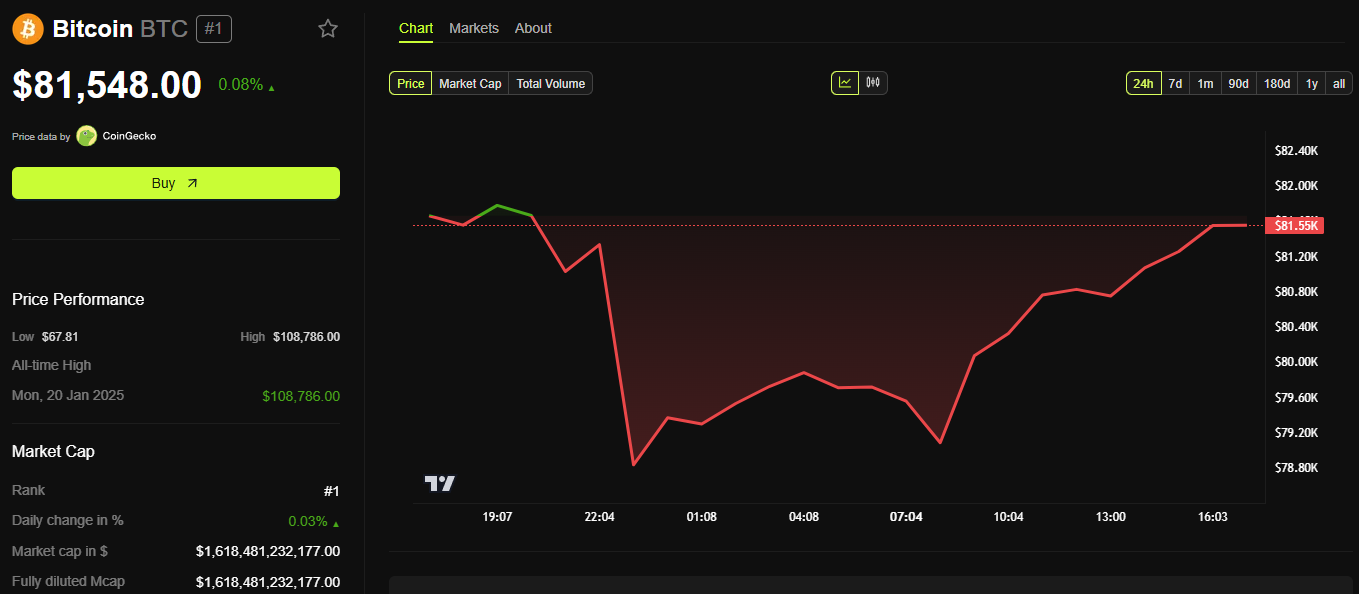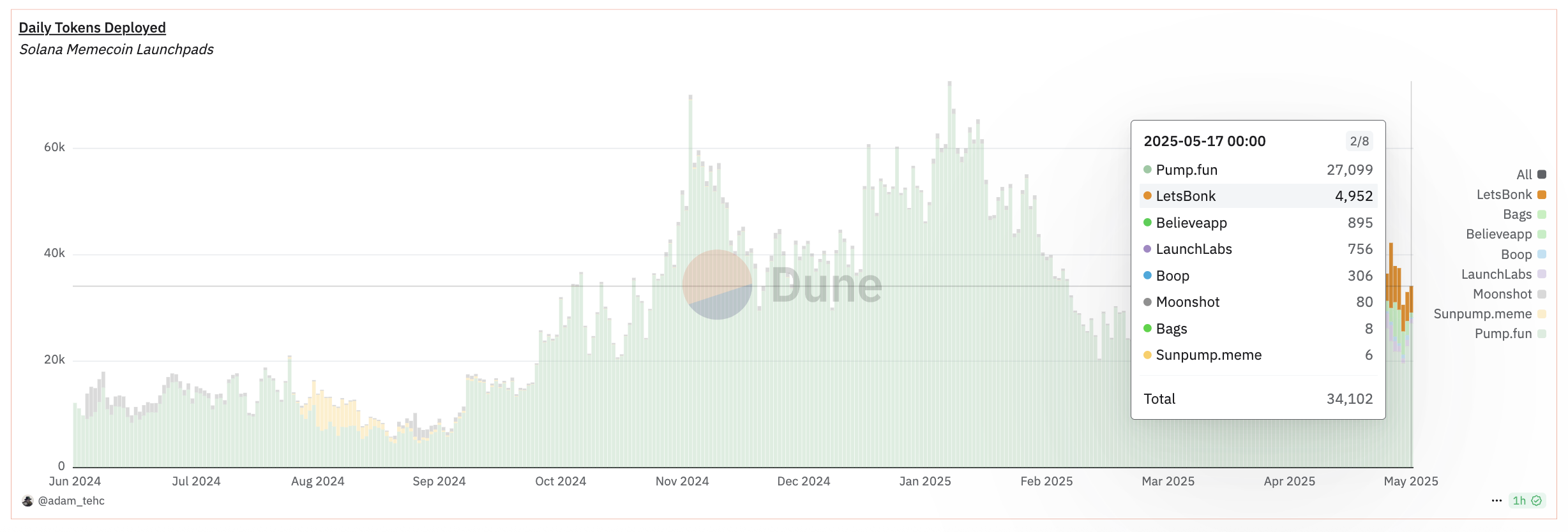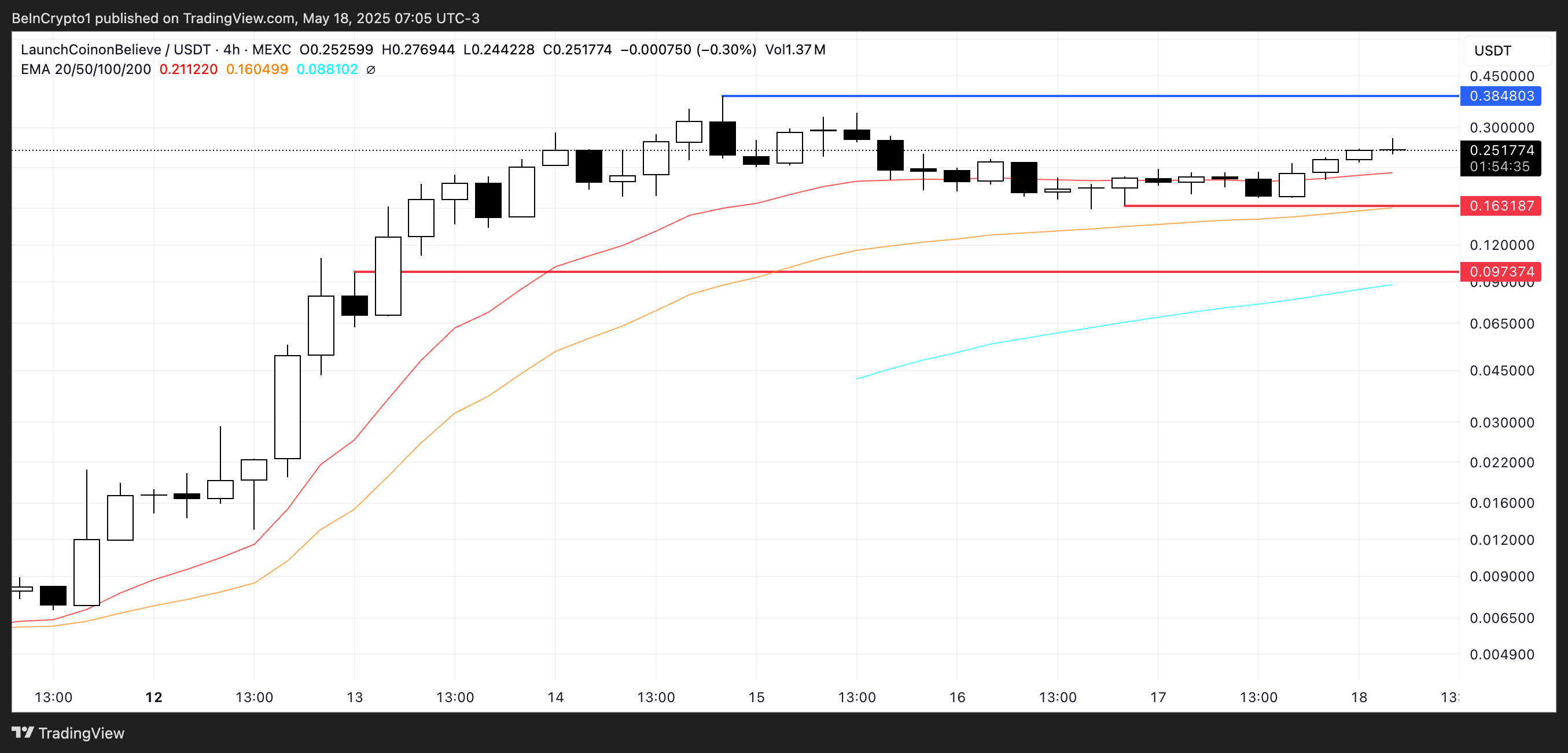The crypto market had a volatile week that ended on a not-so-positive note, led by Bitcoin. Altcoins experienced a similar week, with many noting losses, especially the meme coins, some of which are inching closer to a new all-time low.
BeInCrypto has analyzed three such meme coins, which showcase the different intensities of the market’s drawdown: some noted weekly lows, and others saw massive losses.
Brett (BRETT)
BRETT price had gained 9% over the last week but lost all the gain on Friday after seeing major corrections. The meme coin is trading at $0.0379, below the local resistance of $0.0429.
The meme coin continues to struggle against broader bearish market conditions, making it difficult to break higher. However, with sustained interest, a rise above resistance remains possible.
The primary target for BRETT is to breach $0.0478 and flip it into support after noting a 17% rise. This has been an ongoing challenge for the altcoin, with previous attempts failing over the past month.
Successfully flipping $0.0478 into support would open the path for further growth, potentially pushing BRETT above $0.0500.
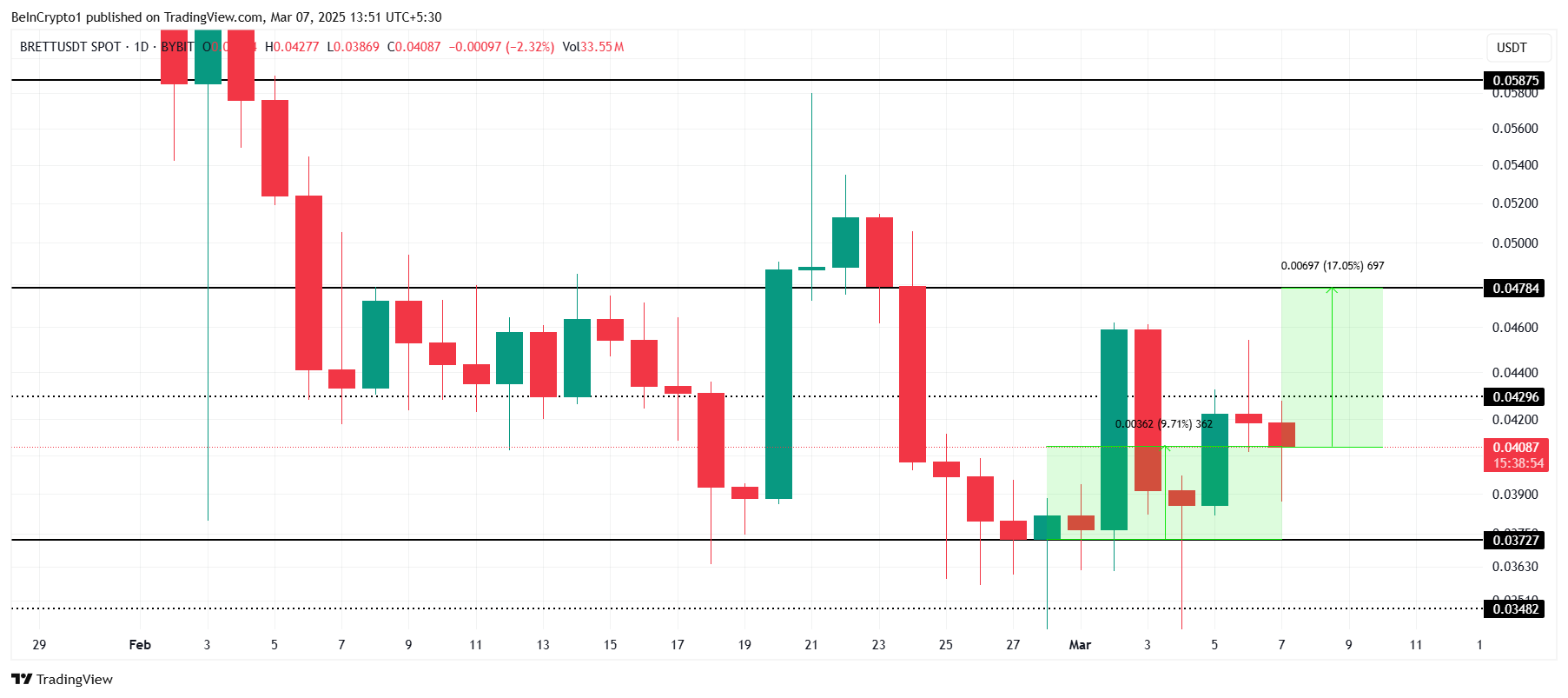
However, if BRETT fails to break through $0.0429, it could retrace to $0.0372. Falling below this level would invalidate the current bullish outlook, potentially sending the altcoin down to $0.0348.
Goatseus Maximus (GOAT)
GOAT has faced a persistent downtrend since the start of the year, currently trading at $0.0634. This prolonged decline has erased nearly all of its previous gains. The market’s overall bearish conditions have kept the altcoin struggling, making it difficult for GOAT to secure upward momentum.
Currently, GOAT is trading just above its all-time low (ATL) of $0.0601, having experienced a significant 37% decline over the past week. If the market conditions remain unfavorable, the altcoin could see a drop below $0.0600, potentially marking a new ATL and deepening its losses.
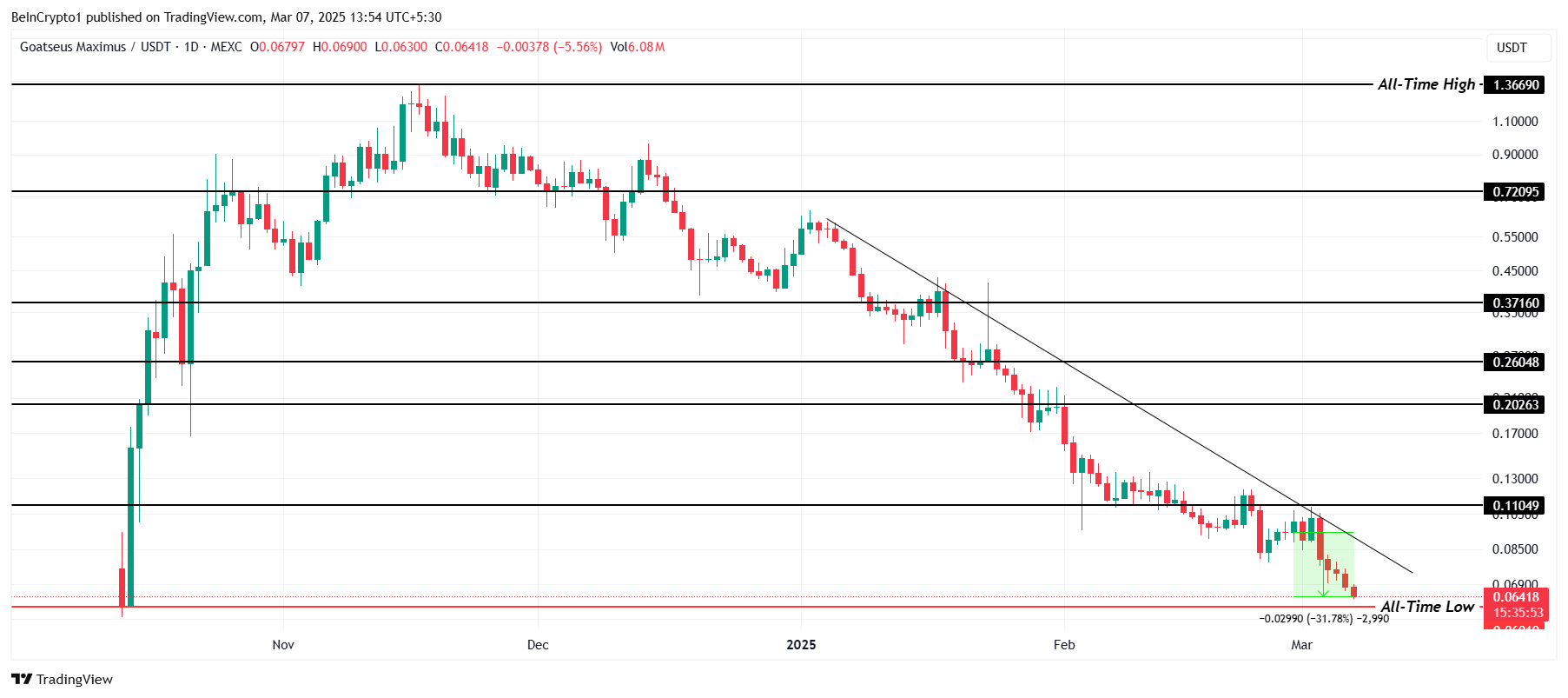
However, if GOAT receives support from bullish investors or market sentiment shifts positively, it could stage a recovery.
The meme coin’s target would be $0.1104, and if it successfully breaches this resistance, the bearish outlook could be invalidated, helping GOAT recover from its recent losses.
OFFICIAL TRUMP (TRUMP)
TRUMP initially jumped to $13.11 this week before seeing a drop to $12.28 on Friday. The meme coin has managed to hold above the key support level of $12.10, indicating a stabilizing trend amid the broader market’s volatility.
This support level continues to be critical for price movements.
While TRUMP reached an intra-week high of $17.14, the altcoin has struggled to maintain upward momentum. The ongoing downtrend and prevailing bearish market conditions pulled the price back down.
Moving forward, TRUMP is likely to consolidate between $17.14 and $12.41, with these levels marking significant resistance and support.
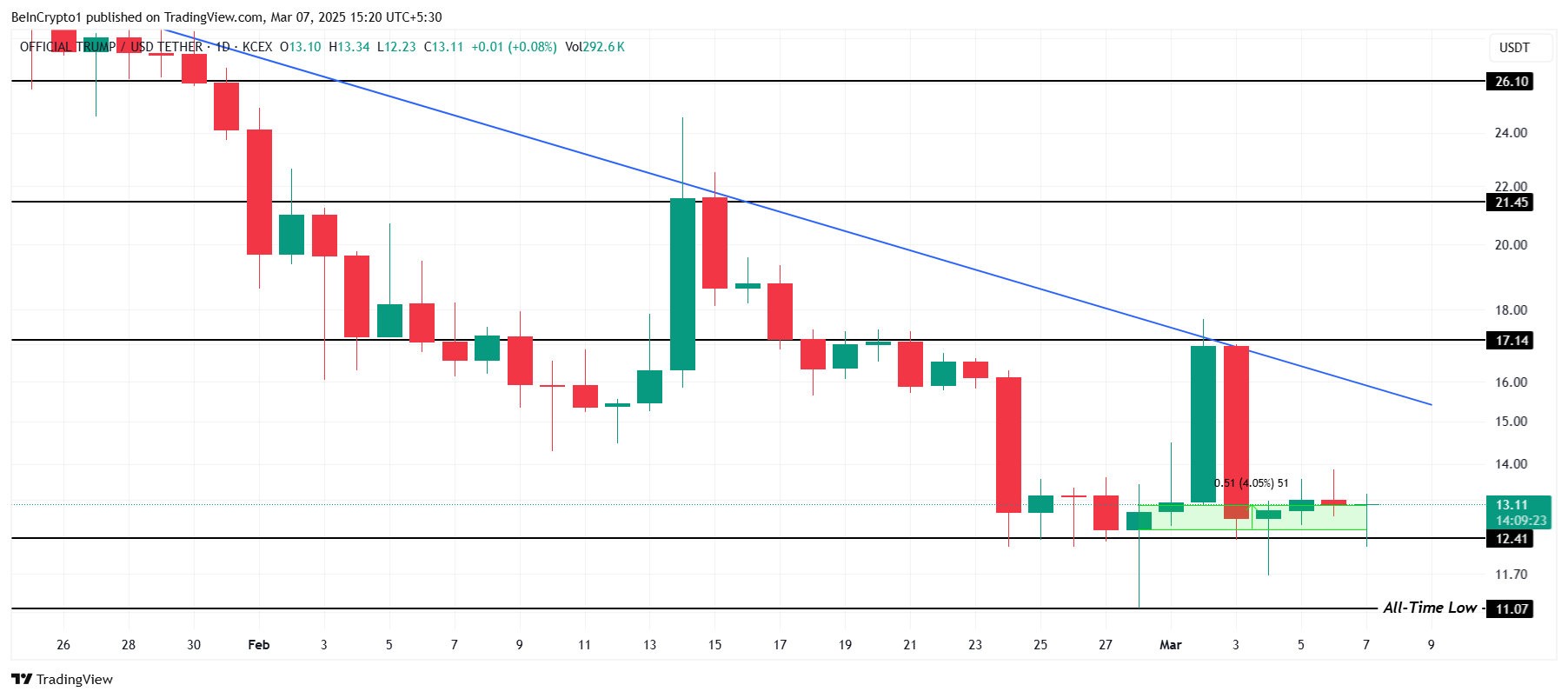
The only way this neutral outlook is invalidated is if TRUMP falls below $12.41. A breakdown below this support could lead the altcoin to slide toward its all-time low (ATL) of $11.07, signaling a more bearish trend.
This would also extend the losses seen in the current downtrend.
The post This Week in Meme Coins: BRETT Gains 10% While TRUMP and GOAT Suffers appeared first on BeInCrypto.



